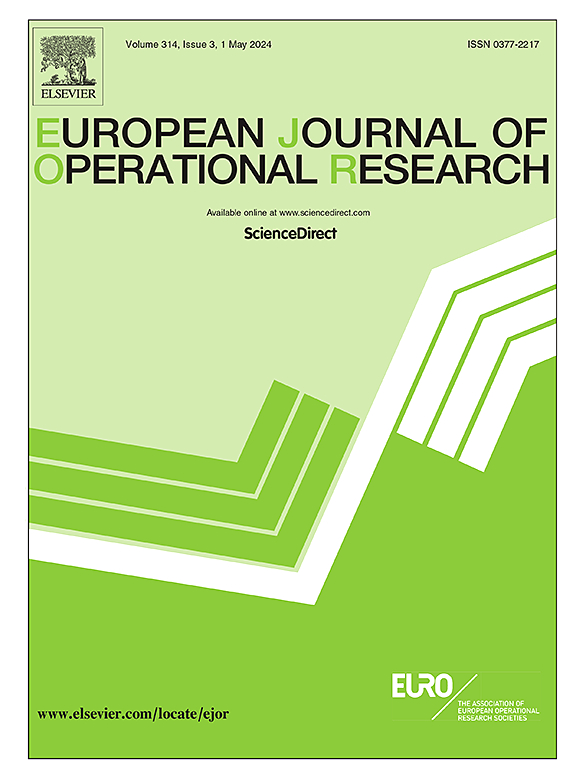An evaluation of common modeling choices for the vehicle routing problem with stochastic demands
IF 6
2区 管理学
Q1 OPERATIONS RESEARCH & MANAGEMENT SCIENCE
引用次数: 0
Abstract
We investigate three common modeling choices for the vehicle routing problem with stochastic demands: (i) the total expected demand of customers on a route may not exceed the capacity of the vehicle, (ii) the number of routes is fixed, and (iii) demand is distributed with a support that contains negative-valued realizations. We prove that modeling choices (i) and (ii) result in an arbitrarily large increase of the optimal objective value in the worst case. Additionally, we provide lower and upper bounds on the change of the optimal objective value following from (iii) in case the actual distribution of demand is censored, truncated or folded. We also evaluate the consequences of these choices numerically, by employing a state-of-the-art integer -shaped method to solve the vehicle routing problem with stochastic demands to optimality, which we modify to deal with the alternative choices. We find that restricting the expected demand of a route to the vehicle’s capacity has a limited effect on the optimal objective value for most, but not all, benchmark instances from the literature, while drastically reducing the computation times of the integer -shaped method. When restricting the number of routes, a similar effect occurs when the total expected demand on a route is not restricted. Otherwise, the computation time decreases only slightly, and even increases for some benchmark instances. For instances from the literature, despite admitting negative realizations, the normal distributions used to model demand are an adequate approximation for censored, truncated and folded normal distributions that have nonnegative supports.
对具有随机需求的车辆路由问题的常见模型选择进行评估
我们研究了具有随机需求的车辆路线问题的三种常见建模选择:(i) 路线上客户的总预期需求不得超过车辆的容量,(ii) 路线数量固定,(iii) 需求分布的支持包含负值实现。我们证明,建模选择(i)和(ii)会导致最优目标值在最坏情况下任意大幅增加。此外,我们还提供了在实际需求分布被删减、截断或折叠的情况下,(iii) 所导致的最优目标值变化的下限和上限。我们还采用了最先进的 L 型整数方法来求解随机需求下的车辆路由问题,从而对这些选择的后果进行了数值评估。我们发现,对于文献中的大多数(而非全部)基准实例,将路线的预期需求限制在车辆的运载能力范围内对最优目标值的影响有限,同时大大减少了整数 L 型方法的计算时间。在限制路线数量时,如果不限制路线上的总预期需求量,也会产生类似的效果。否则,计算时间只会略微减少,在某些基准实例中甚至会增加。对于文献中的实例,尽管允许负实现,但用于需求建模的正态分布是对具有非负支持的删减、截断和折叠正态分布的适当近似。
本文章由计算机程序翻译,如有差异,请以英文原文为准。
求助全文
约1分钟内获得全文
求助全文
来源期刊

European Journal of Operational Research
管理科学-运筹学与管理科学
CiteScore
11.90
自引率
9.40%
发文量
786
审稿时长
8.2 months
期刊介绍:
The European Journal of Operational Research (EJOR) publishes high quality, original papers that contribute to the methodology of operational research (OR) and to the practice of decision making.
 求助内容:
求助内容: 应助结果提醒方式:
应助结果提醒方式:


